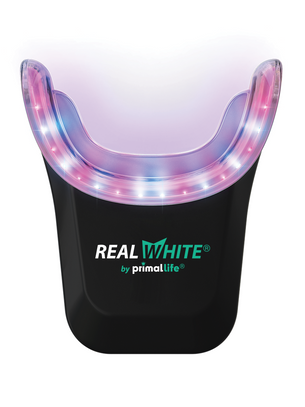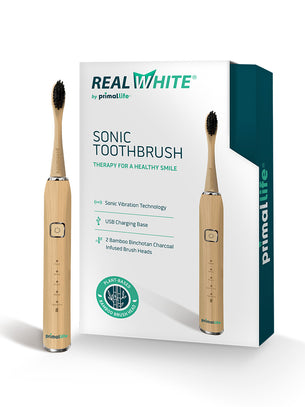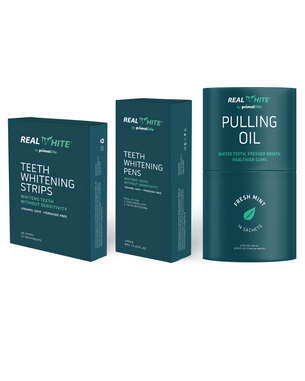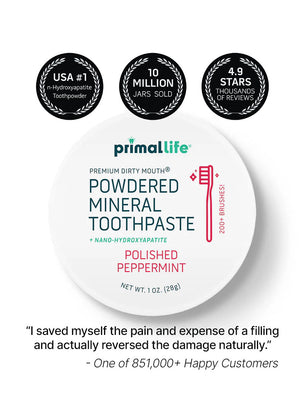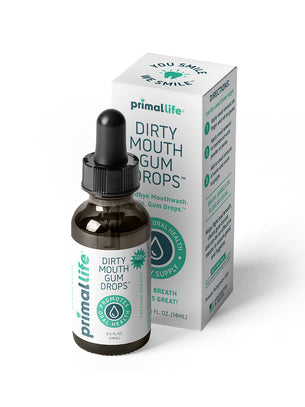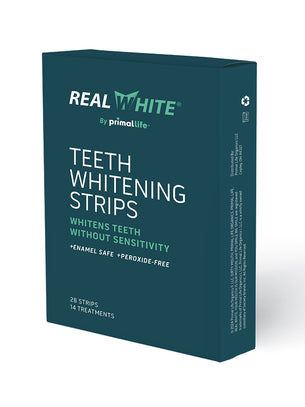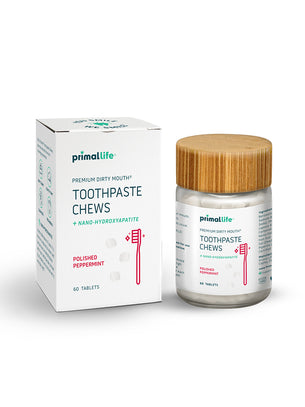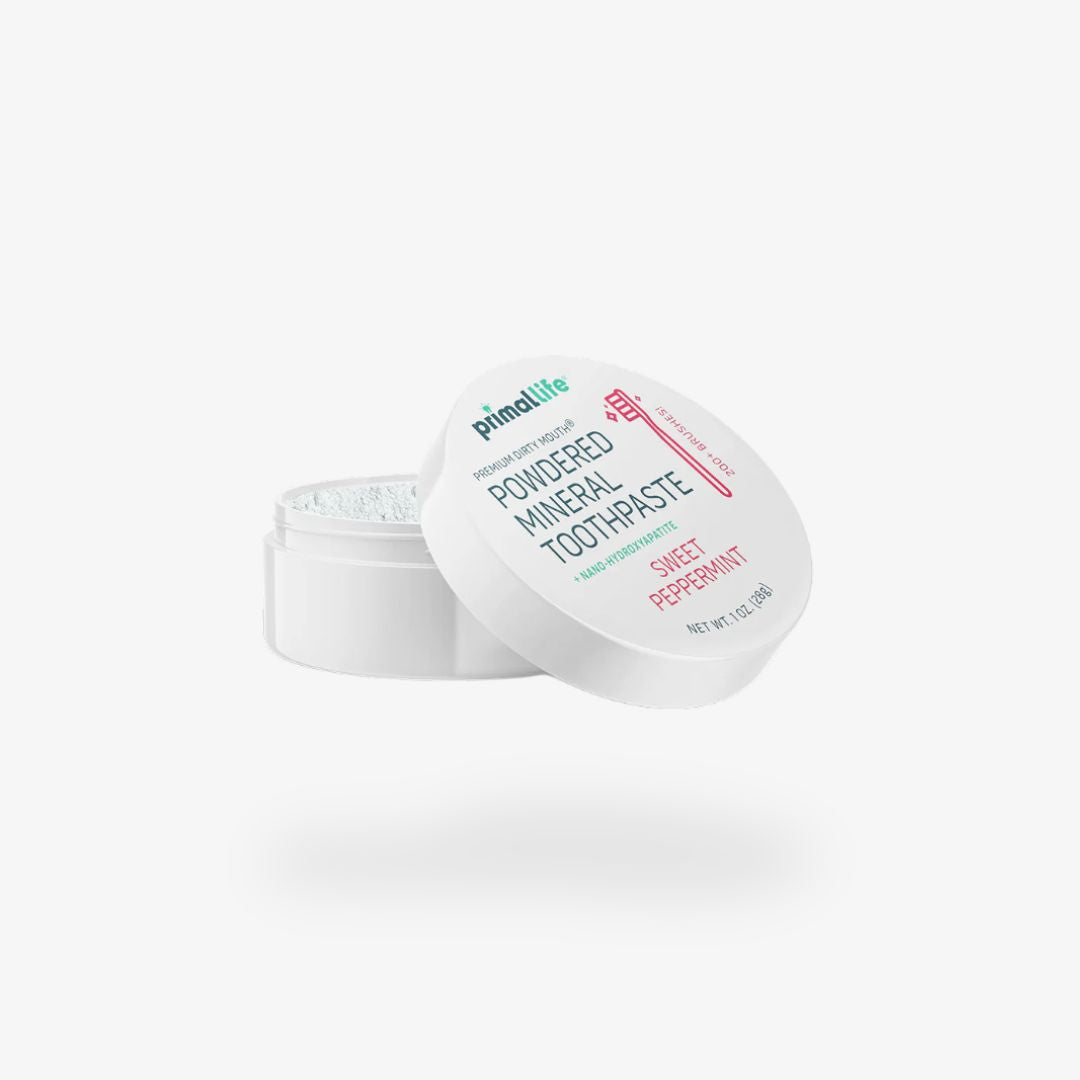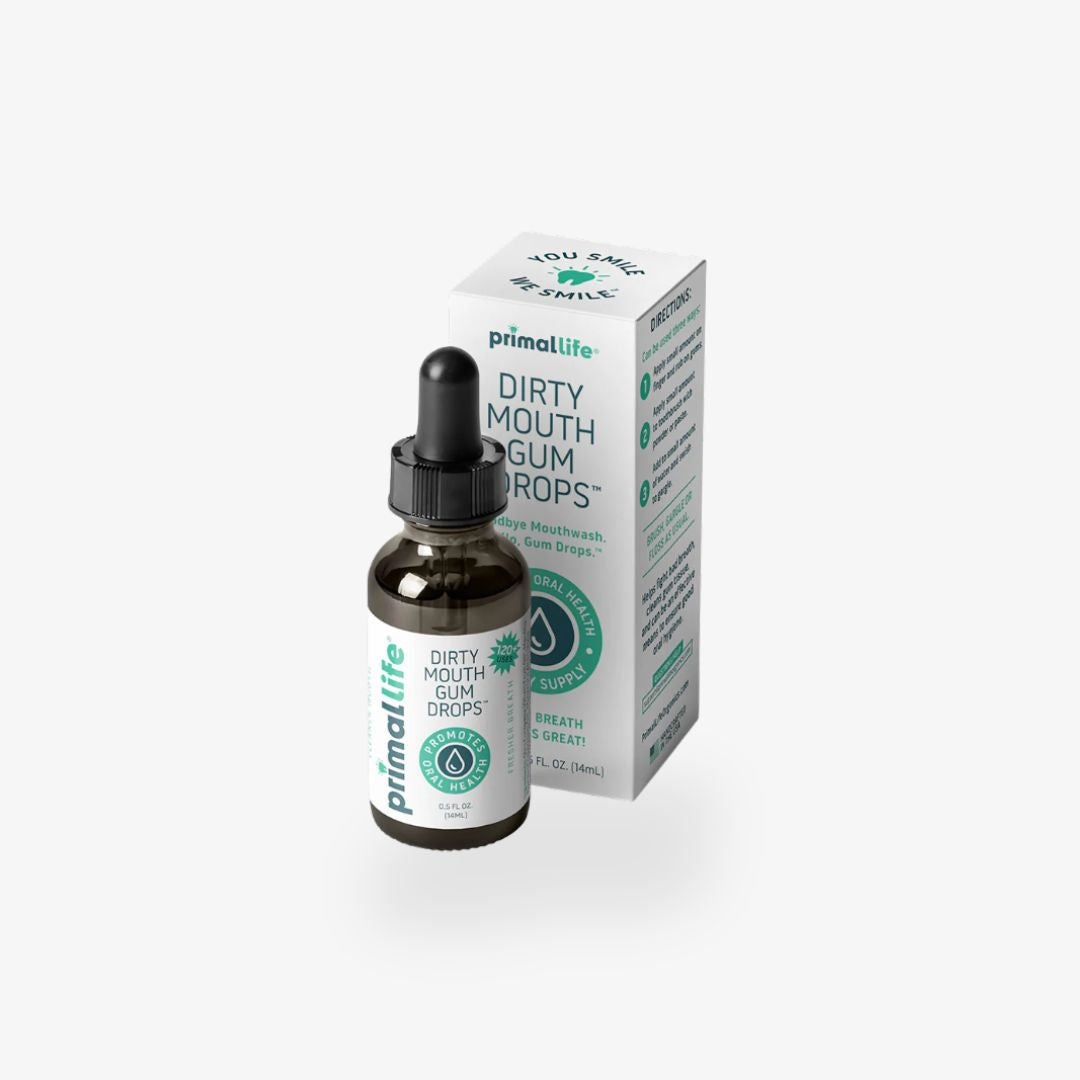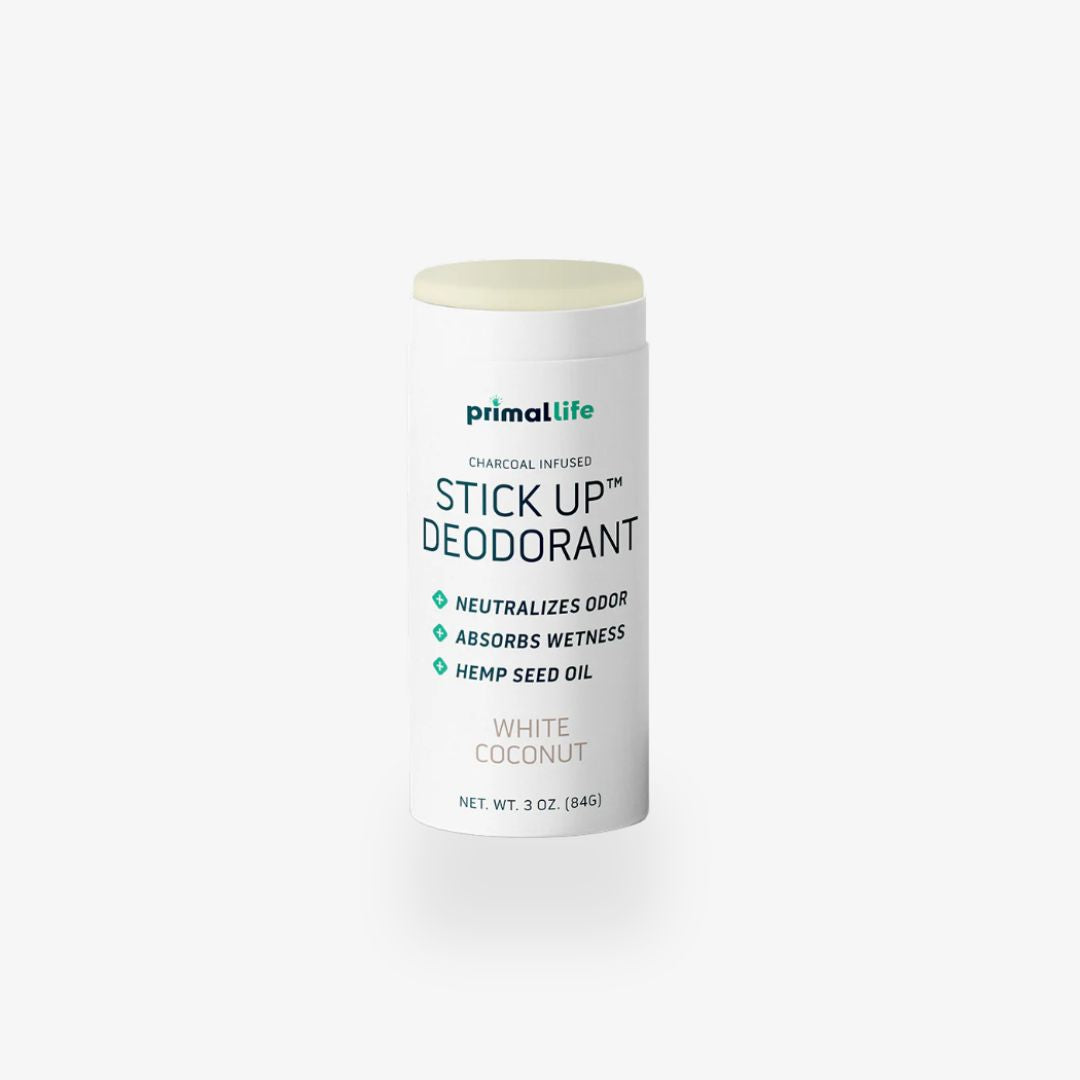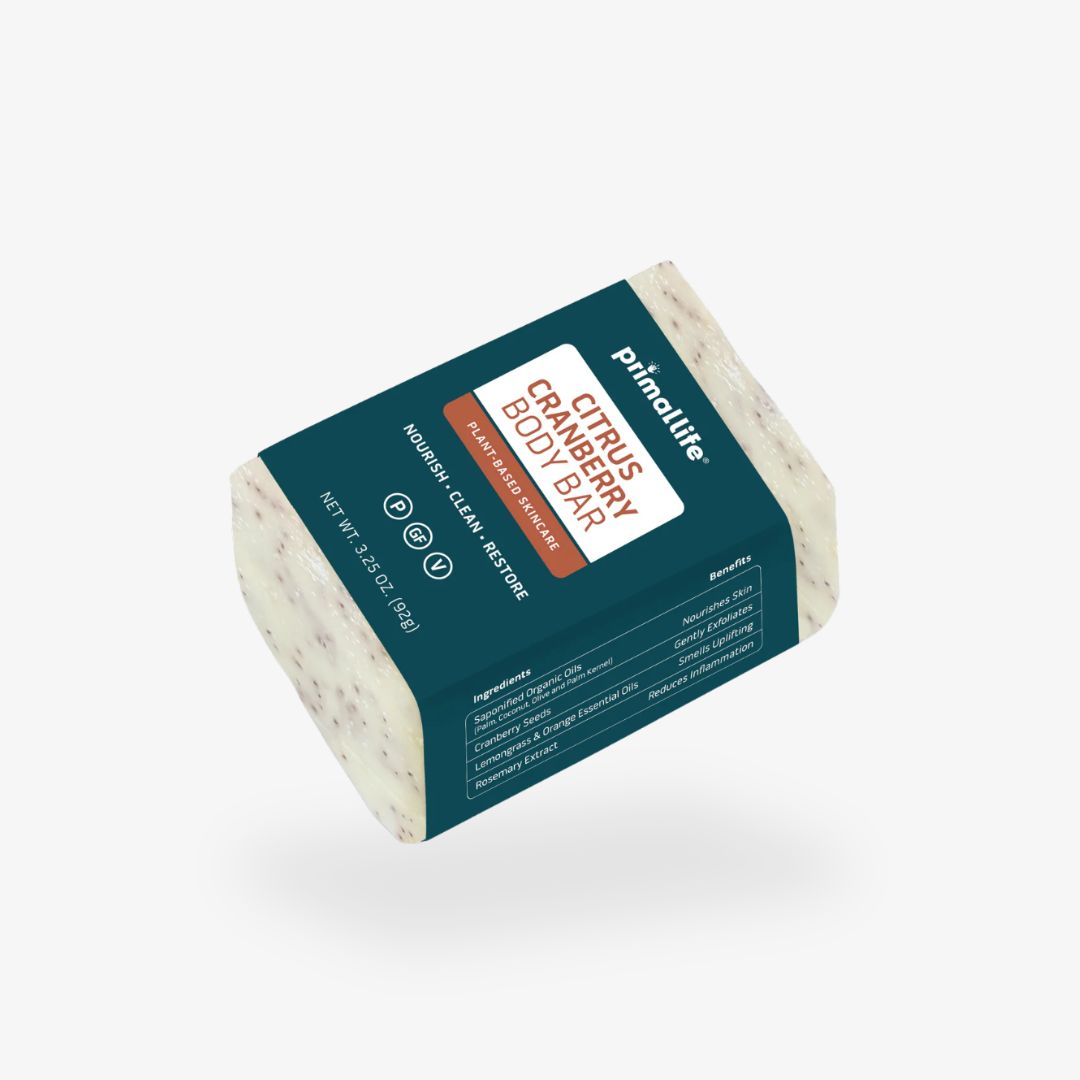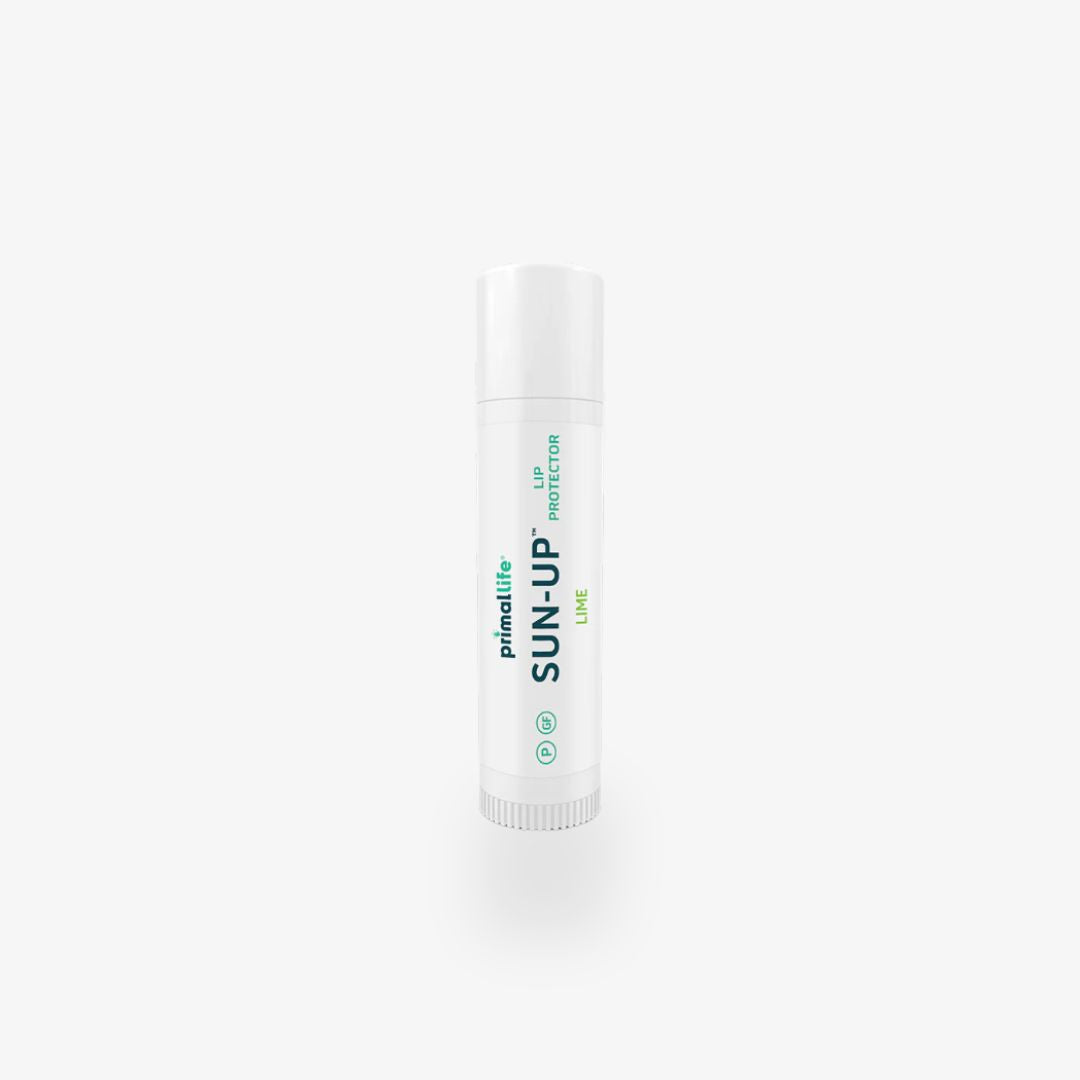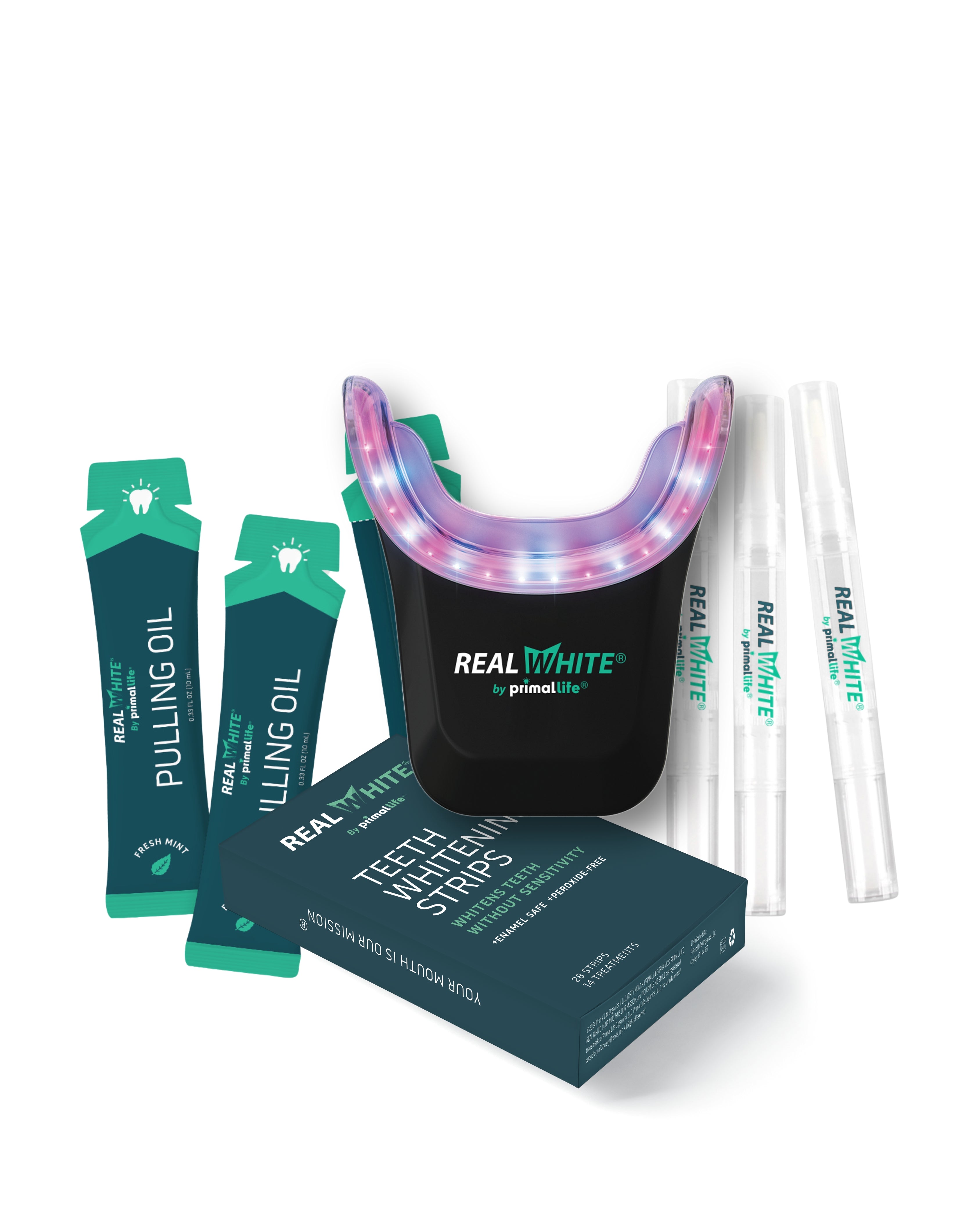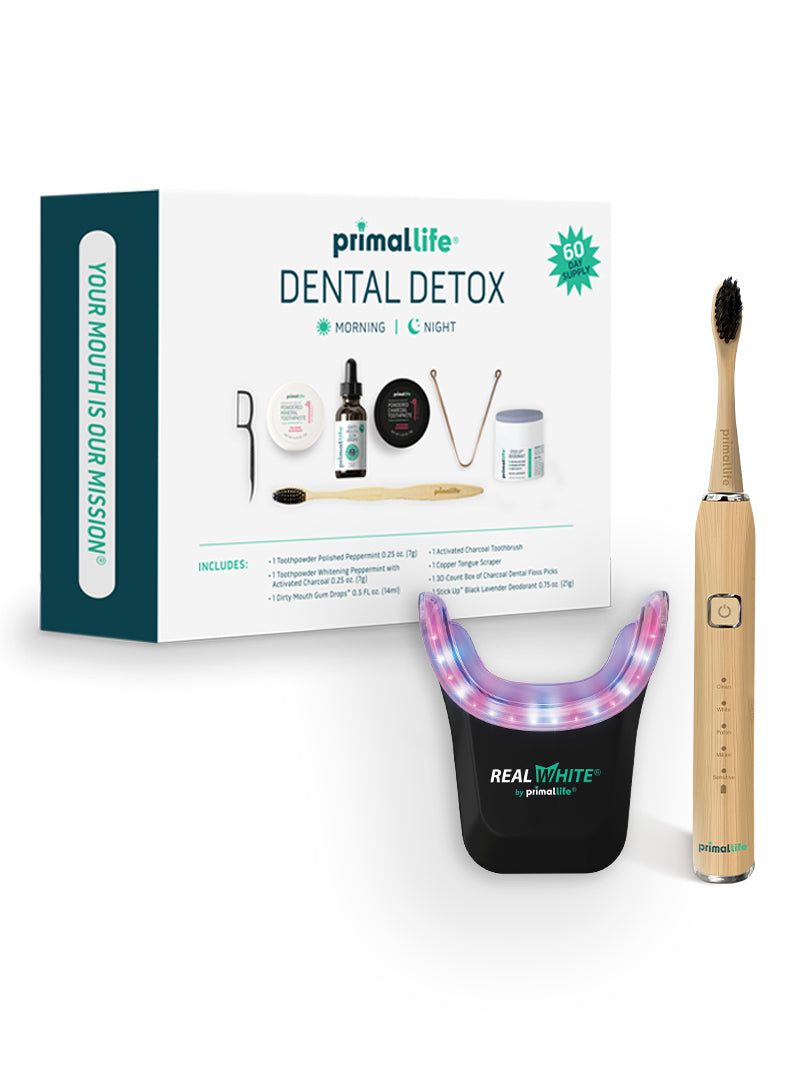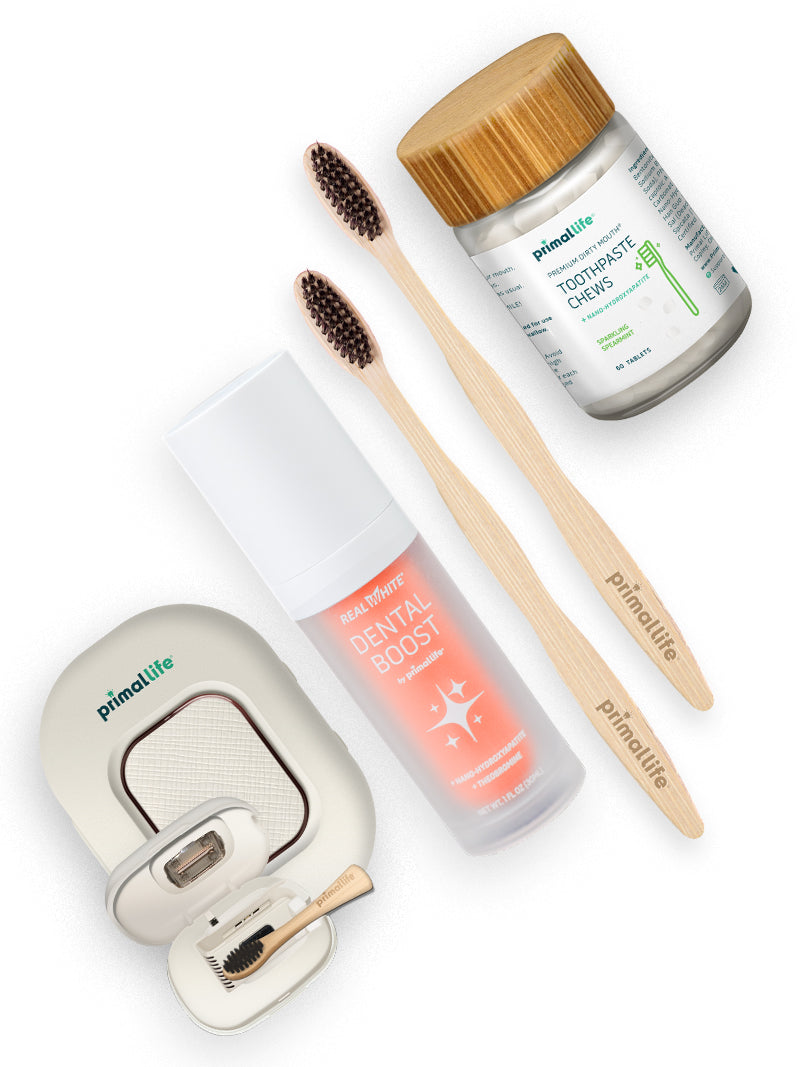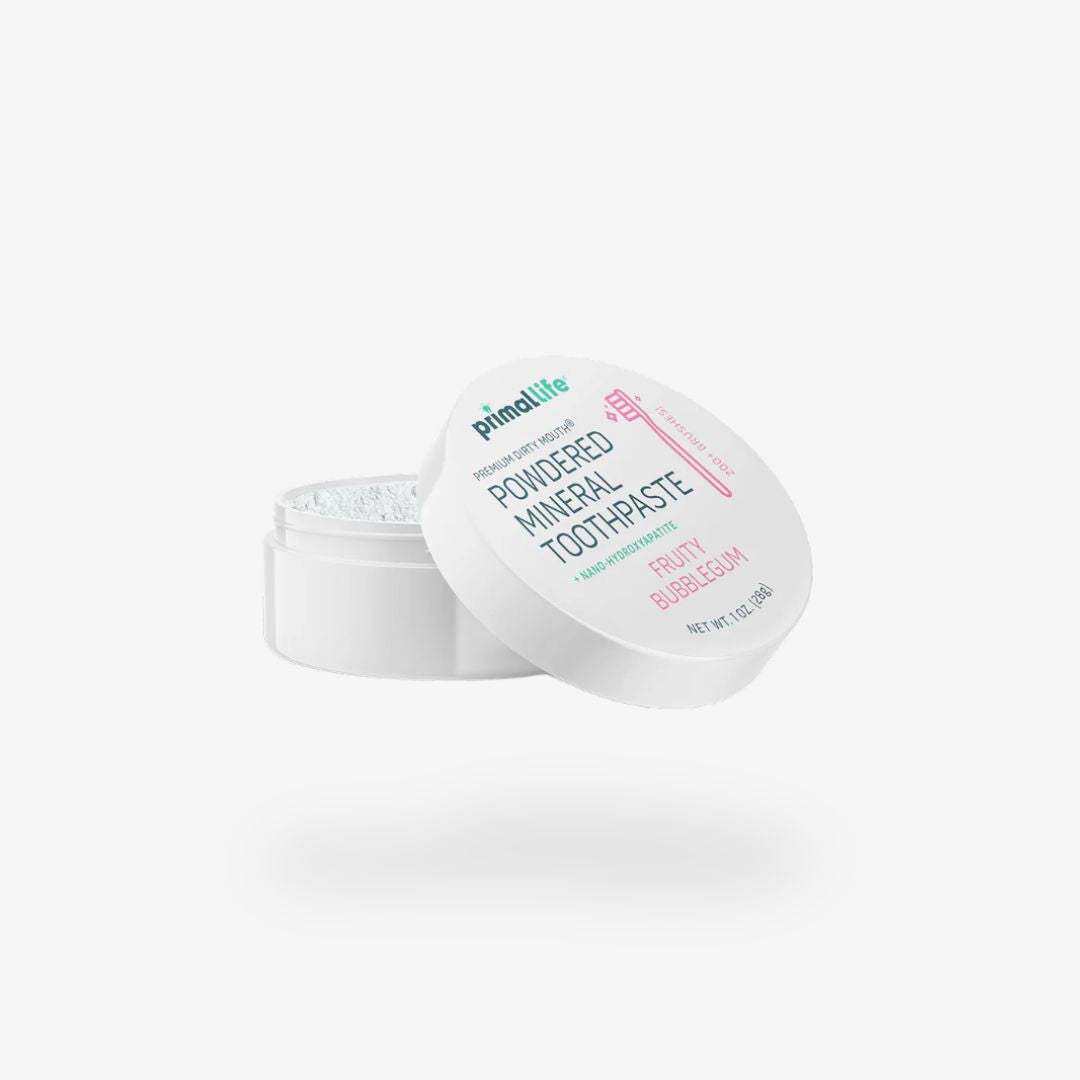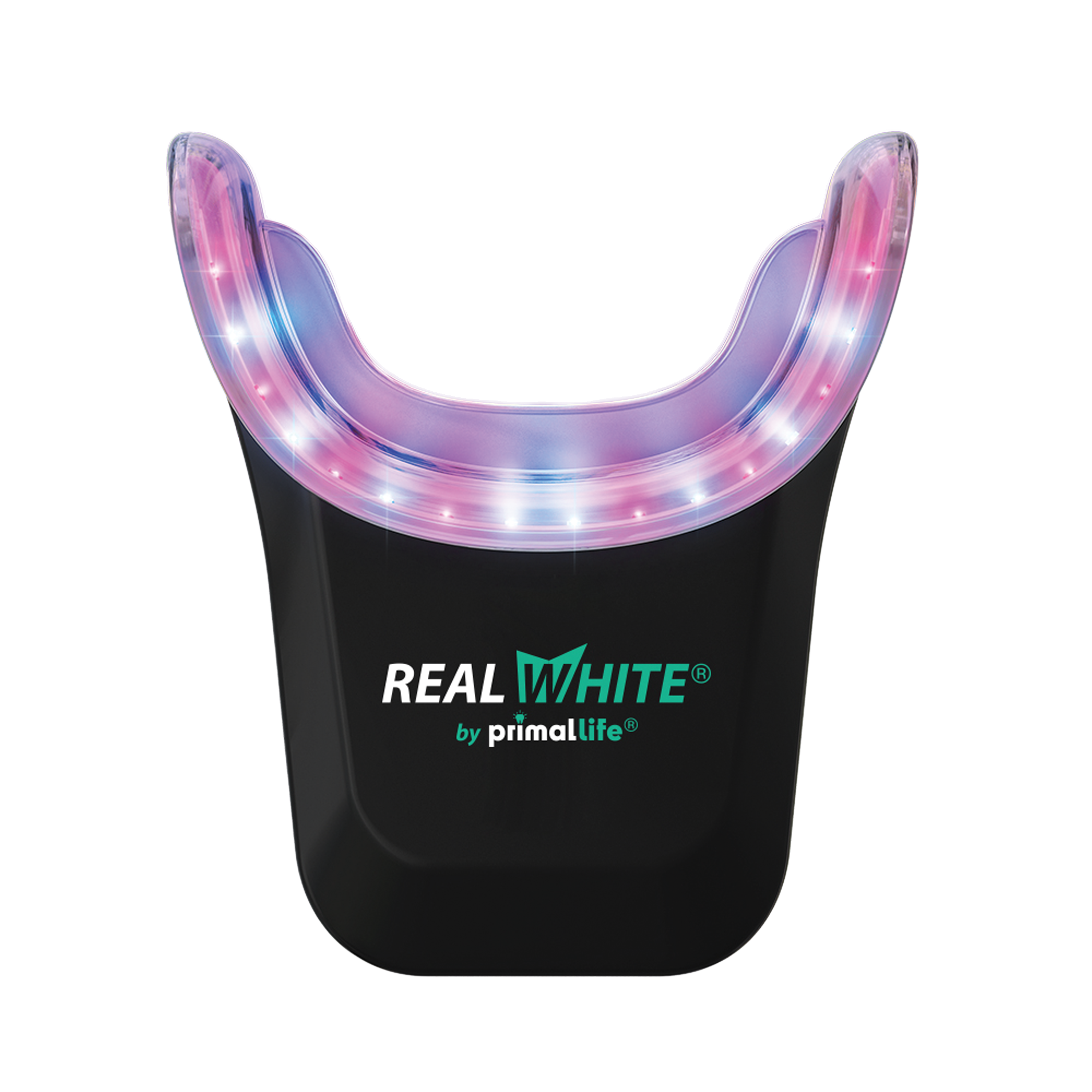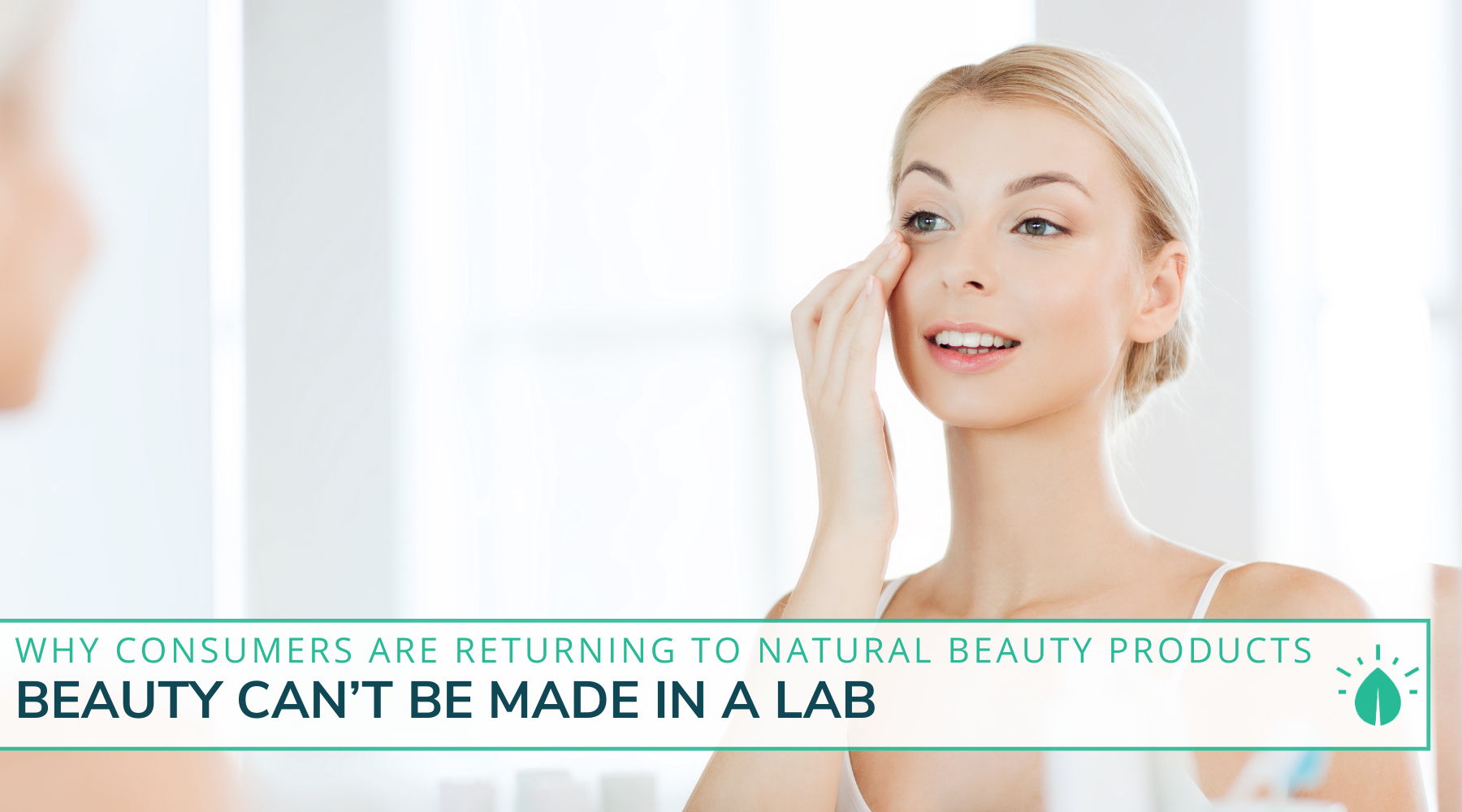*This article was updated on February 25, 2024.
Clean.
Natural.
Green.
Safe.
Non-toxic.
These aren’t just buzzwords. They’re the terms driving the natural beauty industry as customers demand real change. Gwyneth Paltrow, the influential founder of Goop, said it best in a 2016 Vogue interview: “The idea that you’re exercising and trying to eat well and then slathering yourself with chemicals, parabens, and silicones — it’s not great.”
We’re right there with you, Gwyneth. We’ve spent years — decades, really — using “trusted” brands that ultimately caused serious harm to consumers. Johnson & Johnson, for example, recently paid out multimillion-dollar settlements to women who developed ovarian cancer after long-term use of the company’s baby powder. The same baby powder that was branded as the purest powder for sensitive skin!
What you might not realize is the hit your immune system can take trying to protect you from the chemical overload in skincare. I refer to it as "chemical intoxication" that alters the way the skin can function. Making the switch to natural skincare will have immune-boosting powers that will translte to more beautiful skin. When your body does not have to spend energy "detoxing" chemicals it can spend more time healing and regenerating. But not all "natural skincare" is created equal and there are still ingredients to avoid.
Thanks to the emergence of social media and consumer advocacy, we finally have a voice to reject bottles of synthetics and chemicals masquerading as safe beauty products. Tap water, triclosan, sodium lauryl sulfate, formaldehyde, toluene, synthetic colors, and other dangerous substances belong far, far away from your face wash, moisturizers, and makeup.
Knowledge and passion are two key components of change, but we’re hitting a new obstacle in the ever-changing beauty industry culture. Brands ranging from L’Oreal and Sephora to Target and CVS want to claim their stake in the natural beauty movement, so they’re throwing around terms like natural and non-toxic without the meaningful considerations they deserve.
As a result, jars and bottles of “natural” beauty products line store shelves. Even cautious, well-informed consumers struggle to cut through the hype and select products with legitimately clean formulations. After all, their claims are tantalizing, but which ones are true?
We deserve to be empowered by the natural beauty movement, not manipulated by marketing hype, so let’s dig into the real definition of natural beauty products and push impostors to the side.
What Does “Natural” Really Mean?
Everyone from Harper's Bazaar and Environmental Working Group to Huffington Post has contemplated the real definition of natural skincare. I’m sure you have, too.
In general, we assume a natural beauty product isn’t harmful to our skin or health. Most of us equate natural with non-toxic. This perception of “natural beauty” is definitely true for the best and most diligent brands, but not all. It’s far too common for companies to include only one or two plant-based ingredients to improve the appearance of their labels and throw around popular buzzwords.
Why are brands allowed to manipulate and hoodwink customers, you ask? Because terms like all-natural and green aren’t regulated by a governing body or agency.
The FDA and Federal Trade Commission can’t control how companies describe their cosmetics and personal care products, so it’s become the Wild West of marketing. Walk into any drug store, stand in the cosmetics aisle, and randomly read the label of a product claiming to be “100% pure” or “clean”. You’re almost guaranteed to find ingredients that are most definitely not natural.
In my opinion, natural isn’t a term to use lightly, and mainstream beauty brands are diluting its true meaning by making empty claims.
Natural beauty products are only legitimately natural if their ingredients have a relationship with dirt. Plants grow in the dirt and produce oils, essential oils, herbs, and extracts. Heck, clay is the dirt! These are the ingredients that nourish our skin in a truly non-toxic manner.
Natural Vs Organic Beauty Products
Just when you think you have enough of a headache separating real products from impostors, you have another term to consider: organic.
In the debate of natural vs organic, what’s the difference? Is one more important than the other? How should the term “organic” contribute to your shopping decisions? I’m here to explain the truth behind this natural vs organic confusion.
By definition, organic farming represents a collection of practices that rely on natural processes and materials instead of chemicals. The goal of organic agriculture, according to the USDA, is to “support the cycle of on-farm resources, promote ecological balance, and conserve biodiversity.”
This means that organic beauty products are always natural; they’re grown from the dirt without pesticides, chemicals, herbicides, and fertilizers.
Natural beauty products, however, aren’t always organic. Most brands jumping on the plant-based ingredients bandwagon source oils and extracts from conventionally grown plants, not organically grown plants. These ingredients are technically natural since they come from the dirt, but the use of chemicals, pesticides, and fertilizers during the farming process make them definitively non-organic.
Why does this matter so much? If you’re determined to use non-toxic skincare, your products must be organic. When you purchase moisturizers, serums, and cleansers formulated with non-organic plant-based ingredients, all of those chemicals pass directly into your skin and into blood vessels below the surface.
Since substances that enter your bloodstream through your skin aren’t forced to pass through the liver for detoxification, they cause destruction in full concentration. In fact, they may never make it to the liver for excretion at all.
So what happens once the toxins lurking in non-organic ingredients roam freely in your bloodstream? Uncomfortable, embarrassing, and debilitating side effects including:
- Skin irritation
- Acne
- Rosacea
- Hormone disruption
- Neurotoxicity
- Allergies
This means it’s not really a question of natural vs organic. You need products that are natural and organic to keep your skin vibrant.
My personal rule of thumb is to use natural beauty products with at least 95% organic and wild-crafted ingredients. Wild-crafted ingredients are sourced from plants grown in the wild without any human control. They’re not contaminated with herbicides and pesticides like plants on a farmer’s field, so they’re just as safe for your skin as organic ingredients.
How Switching to Natural Products Will Change Your Skin
We’ve all seen them during late night channel surfing: the beauty product infomercials that show dramatic before-and-after pictures. Skin once marred by cystic acne, now clear and smooth. A complexion once overcome by angry rosacea, now vibrant and healthy. We all want to believe that these transformations happen overnight, but it’s not always so simple.
Your skin is completely unique. It’s defined by many factors beyond your skincare products including:
- Hydration
- Inflammatory conditions
- Medications
- Eating habits
- Existing health problems
This is why you may have a different experience than your friend using the same natural skincare routine. Your skin’s response hinges on its existing health and condition, as well as any obstacles standing in the way of rejuvenation.
When you make the switch to natural beauty products, you may watch your pesky breakouts disappear overnight (literally!). In the place of zits, dullness, and discoloration, glowing skin will emerge as natural oils nourish and enrich your complexion.
On the other hand, you might experience a temporary increase in breakouts. Don’t lose your cool.
The explanation is pretty simple: your skin needs to detox, and the detox process ain’t always pretty. If you’ve been using harsh, toxic, conventional skincare products for years, your skin has been trained to overproduce oil in an attempt to counteract its ongoing dehydration. It can take weeks or even months of natural skincare pampering for your skin to unlearn this behavior.
When your skin receives nourishment from natural and organic plant-based ingredients, its natural protective barrier becomes stronger. This empowers your skin to hold more moisture, reject impurities, and support the natural repair processes that keep your complexion looking smooth and bright. You’ll look and feel like the best version of yourself!
What Products Fit Your Natural Beauty Routine? Use This 1-Minute Trick
The most important part of adopting a natural beauty routine is finding products that deserve to call themselves natural. You can’t do this without reading and evaluating the list of ingredients, but ingredients labels are notoriously confusing.
In less than one minute, these three simple tricks will help you determine whether a moisturizer or face mask is really worth your time, money, and trust.
The Rule of 5
All cosmetic brands must list their ingredients according to the FDA’s cosmetic labeling requirements. One of these rules states that ingredients must be “declared in descending order of predominance.”
This is why I emphasize The Rule of 5 to customers determined to understand the secret code of beauty labels. It’s safe to assume that the first five ingredients listed on any label account for approximately 75% to 90% of the entire product.
If the first five ingredients are synthetic, unrecognizable, or impossible to pronounce, place that bottle back on the shelf and walk away. An otherwise toxic or artificial beauty product can’t be redeemed by one or two “natural-ish” ingredients halfway through the list. That’s essentially the equivalent of sitting on the beach for two hours before applying sunscreen.
On the other hand, if the first five ingredients are essential oils, herbs, extracts, and other plant-based oils, you’re in safe territory. These are the products you want to strive to select.
The 1% Rule
The 1% Rule piggybacks off of The Rule of 5. Any ingredients listed beyond the first five are typically added in such low concentrations that they can’t provide benefits. This is critical to consider, especially when the allegedly “natural” ingredients in a product are listed number 17, 18, and 19 in the list.
Since ingredients that account for less than 1% of a product don’t have to be listed in any particular order, companies strategically put the “best looking” ingredients at the beginning of the 1% list. They want to distract your attention away from the first five toxic, synthetic ingredients and draw your attention to the “helichrysum italicum extract” and “lavandula stoechas extract” that sound so natural and nourishing.
Most “natural” ingredients can’t do much when they’re added in concentrations of less than 1%. Of course, Big Cosmo knows that. They’re just hoping that their customers don’t.
Never Buy a Product With This Main Ingredient
Under any other circumstance, we bow down to water as our saving grace and lifeline. But water in beauty products is a whole different matter.
Most products use standard tap water instead of filtered water. Drinking unfiltered tap water is risky enough, but applying it to your skin adds another layer of trouble. When tap water evaporates, it leaves behind high concentrations of toxins and heavy metals on your skin.
Although you may not see the toxins and heavy metals accumulated on your face, you’re sure to notice their side effects like wrinkles, dullness, acne, and discoloration.
Just in case you’ve forgotten, tap water is shown to contains endocrine disruptors and a long list of other toxins you would never voluntarily apply to your skin:
- Disease-causing bacteria
- Heavy metals
- Gasoline solvents
- Synthetic chemicals
- Industrial waste products
- Disinfectant byproducts
- Radioactive substances
In the process of depositing these delightful toxins on your body, water disrupts your protective sebum oils and sucks the hydration right out of your face. Since dehydrated skin can’t eliminate cellular waste products naturally, toxins build up over time and trigger signs of premature aging.
So if you ever find a “natural” beauty product containing water as the first or second ingredient, you know exactly what to do: shove it to the back of the shelf and walk away. Don’t fall into the trap of spending money on a water-based product with a flawed formula that will never deliver on its promises.

Look For Trade Secrets Marked as “Fragrance”
There’s one final trick to understand as you read skincare labels: the word “fragrance” isn’t nearly as innocent as it sounds.
The FDA doesn’t require beauty product manufacturers to disclose the ingredients used to create fragrances since they’re considered “trade secrets”. This makes it impossible to know exactly which chemicals and toxins are loaded into your skincare products.
This is especially concerning when you consider that the International Fragrance Association published a list of more than 3,000 chemicals that are regularly included in the formulas manufacturers call "Fragrance." Many of these chemicals are also listed as chemicals of concern on important publications like California Proposition 65 and the National Toxicology Program 13th Report on Carcinogens.
That's not what any of us want for our skin health and beauty.
The reported common side effects of these undisclosed fragrance ingredients include respiratory distress, allergies, and hormone disruption, not to mention the potential threats they pose to the appearance of your skin.
Find an Example to Lead the Way
It doesn’t take much effort to find examples of skincare labels to avoid — all you have to do is walk into the cosmetics aisle of a drugstore! As a result, most of us may not even recognize product labels that are legitimately safe, natural, and effective.
Luckily for us, Primal Life Organics offers perfect real-life examples. A quick glimpse at Earth Cleanser reveals pure, organic, straight-from-the-dirt ingredients that actively improve the quality of your skin:
- Certified organic coconut, olive, and jojoba oils
- Certified organic aloe vera
- Certified organic rosemary extract
- White kaolin clay
- French green clay
- Certified organic grapefruit peel
- Certified organic honey
- Certified organic lavender
These ingredients aren’t merely listed to “look good” or “win over” customers. They don't dismiss the significance of natural vs organic. Instead, they each play a vital role in enhancing your skin’s vitality. White kaolin clay, for example, is bursting with minerals like magnesium, silica, potassium, and calcium.
As soon as it touches your skin, the clay gently pulls away impurities without ever compromising your healthy, natural sebum oils. Minerals replace the impurities to improve clarity, reduce dryness, and boost elasticity.
And that’s just one of the powerful natural ingredients in Earth Cleanser. Imagine the incredible cumulative effect when clay blends with moisturizing oils and soothing extracts to restore vibrancy you forgot your skin ever had.
Compare this to the label of a standard "name brand" face cleanser packed with questionable ingredients:
- Water
- Sodium c14-16 olefin sulfonate
- Cocamidopropyl betaine
- Linoleamidopropyl pg- dimonium chloride phosphate
- Yellow 5
- Red 40
- Fragrance
- PEG-80 Sorbitan Laurate
Uh… I know which product I’d rather slather all over my skin twice a day. Sheesh. It’s no wonder that your skin craves a short detox when transitioning from a conventional to a natural beauty routine!
You Won’t Find Beauty In a Lab, So Make the Switch to Natural
In your quest to find natural beauty products, you’ll find plenty of losers, a handful of middle-of-the-roaders that only tackle one end of the natural vs organic spectrum, and a few premium products that check all your boxes. I’ve committed so many years to develop Primal Life Organics so that consumers like you have easy access to certified organic, plant-based ingredients proven to nurture, enhance, and strengthen the skin.
My water-free formulations can penetrate your skin barrier, provide vital nutrients that might otherwise never reach your skin tissue, promote regeneration and healing which in turn takes years off your face.
I’d rather spend six extra months searching for the perfect natural ingredient for a new product than include an ingredient I can’t personally promise will do its job. When you make the switch to authentic natural beauty products like Primal Life Organics, you’ll watch as your lifeless, sallow skin reclaims its youthful glow.
If you are interested in really cleaning up your beauty care, I suggest starting with my STARTER PACKAGE for the face and body. Toxins enter though all of your skin, so making the switch in the products you use daily will speed the results you get.
Get your youthful glow back with our Best Selling Package and our recommend starting package:
You Might Also Enjoy:
- NON-SURGICAL FACELIFT TECHNIQUE TO KEEP YOUR YOUTHFUL SKIN
- DROOPY FACE? HERE’S THE ROOT CAUSE OF AGING SKIN & SAGGING FACE MUSCLES
- NO MORE NEEDLES! THE NON-SURGICAL NATURAL FACELIFT KIT FOR SMOOTH, VIBRANT SKIN
- HOW TO REJUVENATE YOUR SKIN AND HEALTH WITH BEAUTY SLEEP
- FACE WIPES: ARE YOU SLEEPING WITH YOUR ENEMY?
Resource links:
https://www.vogue.com/article/gwyneth-paltrow-goop-by-juice-beauty-skin-care-announcement
https://www.nytimes.com/2018/07/12/business/johnson-johnson-talcum-powder.html
https://www.ncbi.nlm.nih.gov/pmc/articles/PMC1253722/
https://www.ewg.org/news-and-analysis/2018/01/natural-or-organic-cosmetics-don-t-trust-marketing-claims
https://www.ams.usda.gov/sites/default/files/media/Organic%20Practices%20Factsheet.pdf
https://www.usda.gov/topics/organic
https://www.fda.gov/cosmetics/cosmetics-labeling-regulations/summary-cosmetics-labeling-requirements
https://www.fda.gov/cosmetics/cosmetics-labeling/trade-secret-ingredients
https://ifrafragrance.org/initiatives/transparency/ifra-transparency-list
https://www.ewg.org/enviroblog/2014/08/expert-panel-confirms-fragrance-ingredient-can-cause-cancer
https://www.walmart.com/ip/Neutrogena-Oil-Free-Salicylic-Acid-Acne-Fighting-Face-Wash-9-1-fl-oz/
Read more
Winter has arrived! Frigid temperatures, biting winds, and harsh indoor heating are about to sweep in and suck your skin dry. That bright, bronzed skin you boasted over the summer will quickly be ...
There are plenty of synthetic-free options these days — and when it comes to self-care, kaolin clay is a winner. In this guide, we'll share all you need to know about this ancient mineral that's po...
